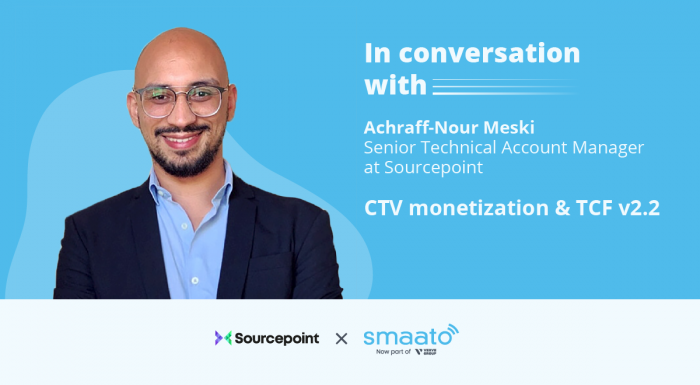Here are five best practices that advertisers can apply to their next in-app advertising campaign to optimize their strategy and maximize campaign performance:
1. Know Where Your Ads Come From
The mobile advertising landscape is a complex environment that requires trust and transparency among all supply and demand partners. This is especially important for advertisers to maintain control over their creatives as they move through the programmatic supply chain and are ultimately served on a user’s mobile device.

The best starting point is to understand where purchased ads are coming from and who is authorized to sell this inventory. Choose supply partners wisely — many premium publishers only work with a small selection of supply-side platforms (SSPs), and working with SSPs that have direct relationships to high-quality inventory is the best way for advertisers to maintain control over their ads and get the best return on investment.
Why is this important? For publishers, low quality ads can hurt brand engagement and sentiment. For marketers, low quality traffic wastes campaign dollars and lowers efficacy.
At Smaato, we have a dedicated, round-the-clock team of Market Quality specialists to ensure ad quality and traffic quality are top notch. Learn more.
2. Choose Banners for Reach, Full-Screen for Impact
The in-app environment makes it so ad spaces are seamlessly integrated within the content. This helps turn ads into an experience with the potential to enhance (rather than distract from) the user experience. Marketers and advertisers can serve relevant, engaging creative. When choosing an ad format for an in-app campaign, consider how users experience advertising in the app age. Different inventory and ad formats come with different benefits.
Top In-App Display Ad Formats
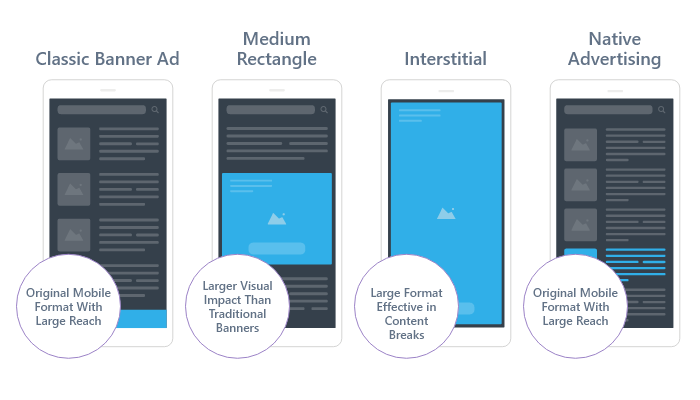
3. Maximize Engagement With In-App Video
Video is one of the most effective advertising formats for connecting with mobile consumers. Mobile video ads yield higher user engagement and greater brand recall.
Video ads through CTV/OTT apps aren’t the only options. In-app video ads can be highly cost effective sources for video inventory.
Interactive Video
To maximize consumer engagement, look no further than VPAID (Video Player-Ad Interface Definition). This video ad delivery format allows advertisers to program interactive features directly into ads, such as hover-overs and click-and-drag interactions. It also allows advertisers to implement preferred viewability tracking, regardless of whether the specific measurement provider is integrated into an app’s SDK. Learn more about video advertising here.
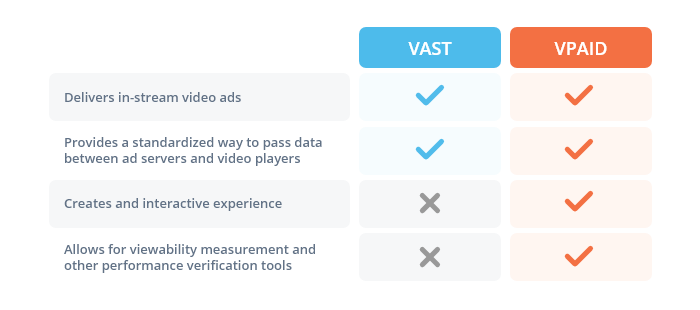
Rewarded Video
Another effective method for gaining informed clicks and high-quality conversions is to use rewarded video ads. Since this ad format is opt-in, with users choosing to watch in exchange for a reward, it has one of the highest viewability rates of any mobile ad format. Plus, marketers only pay for impressions where the user completes the full ad, to ensure only relevant, engaged views are counted.
Top Mobile Ad Formats for Gaming Apps
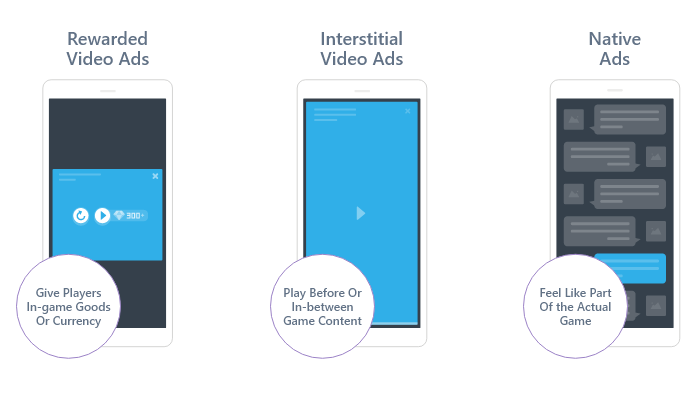
Plus, apps outside of gaming can take advantage of this format, for example, offering free content, streaming, articles, or ad-free listening across news, video, editorial, or music apps.
4. Take Advantage of Private Marketplace & Other Programmatic Deals
Customized programmatic deals are an effective way to ensure that in-app advertising campaigns reach their target audience at the right mobile moment. Not only do they provide more transparency and control, but also they are effective tools for optimizing campaigns, inventory and pricing.
Types of Mobile Programmatic Buying
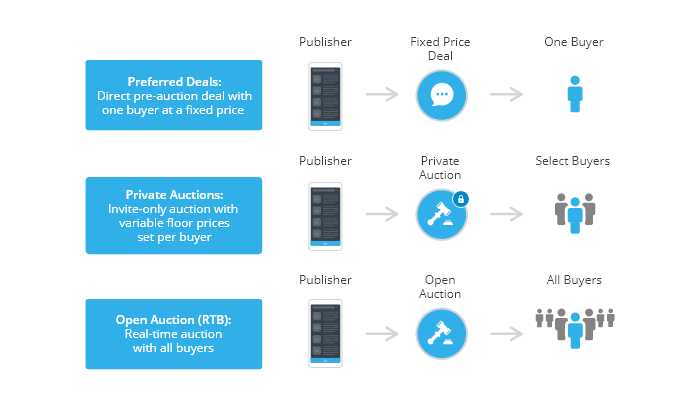
Buying inventory through programmatic deals creates a direct relationship between advertiser and publisher. This adds a huge amount of transparency. Now, advertisers and marketers can get better insight into exactly who is seeing their ads and in what context(s). When working directly with supply partners, there are multiple programmatic buying options available. At Smaato, we recommend Preferred Deals, Private Marketplaces, and Open Deals. Here’s how we look at these tactics:
| Preferred Deals | Private Marketplace/Private Exchange | Open Deals |
|---|---|---|
| Preferred deals are non-guaranteed direct deals between a single publisher and single advertiser. With a preferred deall, publishers and advertisers pre-negotiate a fixed rate for inventory. This gives marketers a chance for a first look at premium inventory without the obligation to buy. | Private Marketplace (PMP) is an exclusive RTB auction where publishers offer hand-selected marketers a chance to bid on specific ad placements. Private exchange inventory can be built around numerous variables, including audience data, content type, impression attributes and more. | With Open Deals, buyers can purchase a package of inventory across different publishers based on their targeting goals or customize their own package with specific apps and ad spaces. These deals will still be executed at the open auction level, but create predetermined parameters around the exact inventory being bid on. |
Learn all about programmatic deals in this free guide.
5. Context is Key: Target People in Their Natural Habitat
Since mobile tends to be a personal device, marketers can reach one person directly, rather than having to figure out targeting for shared devices. Publisher-managed first party data is extremely valuable for reaching highly-specific audiences and achieving campaign success.
With such a wide range of apps available for diverse audiences and purposes, contextual in-app targeting is one of the most effective targeting tools available. Reaching users based on what apps they enjoy (versus exactly who they are) offers a privacy-compliant way to deliver hyper-relevant advertising creative.
Plus, for iOS 14.5+, SKAdNetwork offers a safe way to measure campaign efficacy and attribute app installs. To learn more about shifting privacy laws and ensuring compliance, check out our blog.
Ready to learn more in-app advertising opportunities?
Download our free Guide to In-App Advertising.



